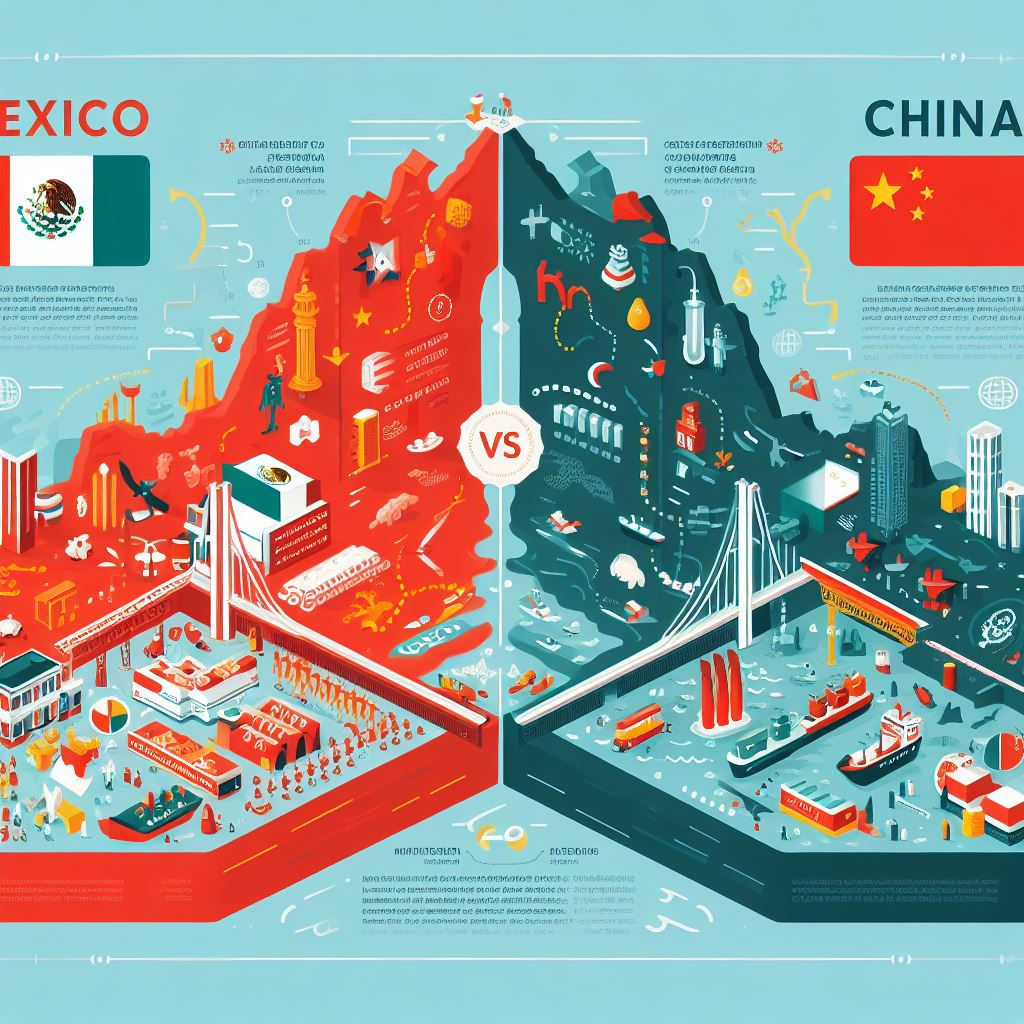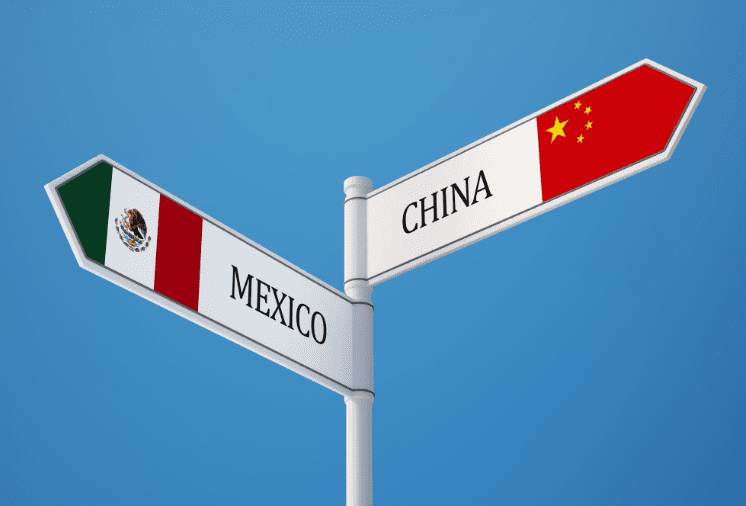Wondering How Mexico can become The New China? Mexico’s Rise as New Manufacturing Hub
In recent years, Mexico has emerged as a dynamic force in the global manufacturing landscape, drawing parallels with China’s dominant position as the world’s manufacturing hub. This transformation has been catalyzed by various factors, including trade dynamics, labor costs, geographical advantages, and shifting market trends. In this article, we will delve into the reasons how Mexico can become the new China in the manufacturing realm and explore the implications of this shift.
Thank you for reading this post, don't forget to subscribe!
The Mexico-China Manufacturing Comparison
1. Proximity to Major Markets
One of the key advantages that Mexico holds over China is its geographic proximity to major markets, particularly the United States. This proximity allows for shorter supply chains, reduced transportation costs, and quicker turnaround times. As businesses increasingly prioritize just-in-time production and faster delivery, Mexico’s geographical advantage becomes a significant factor.
2. Cost Competitiveness
While China was long known for its low labor costs, the gap between wages in China and those in Mexico has been narrowing. Mexico offers a well-trained and skilled workforce at competitive wage rates. Additionally, Mexico’s close proximity contributes to lower shipping and logistical costs, offsetting some of the savings associated with outsourcing to distant regions like Asia.
3. Trade Agreements and Supply Chain Resilience
Mexico’s strategic trade agreements, such as the United States-Mexico-Canada Agreement (USMCA) and its network of free trade agreements with over 50 countries, have played a pivotal role in attracting foreign investment. These agreements ensure preferential trade terms and supply chain resilience, allowing companies to navigate complex global trade dynamics more effectively.
4. Technological Advancements
Mexico has been making substantial investments in research, development, and innovation. This focus on technology and automation has enhanced the country’s manufacturing capabilities, making it an attractive destination for industries seeking advanced production processes.
5. Diversification and Specialization
Mexico’s manufacturing landscape is no longer limited to a single industry. While China has been diversifying its economy, Mexico has been carving out niches in industries such as automotive, aerospace, electronics, and medical devices. This specialization allows Mexico to cater to a range of industries with tailored expertise.

The Implications of Mexico’s Rise
1. Reshoring and Nearshoring
The trend of reshoring, where companies bring their manufacturing operations closer to their home markets, aligns well with Mexico’s geographical advantage. This shift allows businesses to reduce supply chain risks, enhance operational agility, and respond more effectively to changing market demands.
2. Job Creation and Economic Growth
Mexico’s growth as a manufacturing hub translates into increased job opportunities and economic growth. This growth benefits not only the manufacturing sector but also related industries and the broader economy.
3. Competition and Collaboration
As Mexico rises in prominence, it fosters healthy competition with established manufacturing giants while also providing opportunities for collaboration. Businesses can leverage Mexico’s strengths to optimize their global supply chains and enhance their competitiveness.
Will Mexico Take Manufacturing Away From China?
While it’s unlikely that Mexico will completely take manufacturing away from China, it is true that Mexico has been increasingly attracting manufacturing investments and businesses from China and other countries. Mexico’s rise as a manufacturing hub offers a viable alternative to China for certain industries and regions. However, the extent to which Mexico will impact China’s manufacturing dominance depends on various factors, including trade dynamics, economic policies, and industry specialization. Here are some key points to consider:
**1. Complementary Roles:** Mexico and China have different strengths and advantages in the manufacturing sector. While Mexico’s proximity to major markets, trade agreements, and skilled labor are appealing to industries like automotive, aerospace, and electronics, China’s manufacturing ecosystem, infrastructure, and scale are unmatched in various sectors.
**2. Industry Specialization:** Mexico has been carving out niches in industries such as automotive, aerospace, and medical devices. These industries require proximity to markets and advanced manufacturing capabilities, which align well with Mexico’s strengths. China, on the other hand, continues to dominate sectors like electronics, textiles, and consumer goods.
**3. Reshoring and Nearshoring:** As companies look to reduce supply chain risks and respond to changing market demands, they are considering reshoring or nearshoring strategies. Mexico’s geographical proximity to North American markets makes it an attractive option for companies looking to bring manufacturing operations closer to home.
**4. Global Supply Chains:** China remains a critical player in global supply chains due to its vast infrastructure, skilled labor force, and extensive supplier networks. Many companies have developed intricate supply chains in China, making it challenging to shift production entirely to other countries.
**5. Trade Dynamics:** Trade relationships and geopolitical factors play a significant role in manufacturing decisions. Changes in trade policies, tariffs, and global economic conditions can influence where companies choose to establish manufacturing operations.
**6. Collaboration and Competition:** Mexico’s rise in manufacturing has fostered both competition and collaboration between the two countries. Companies are exploring ways to optimize their global supply chains by leveraging the strengths of both Mexico and China.
Conclusion
Mexico’s transformation into a new manufacturing powerhouse bears striking similarities to China’s ascent in the past decades. With its geographical advantages, competitive labor costs, trade agreements, and commitment to technological advancement, Mexico is well poised to become a central player in the global manufacturing arena.
This shift presents opportunities for reshoring, economic growth, and collaboration, while also requiring businesses to adapt to evolving supply chain dynamics. As Mexico continues to build on its manufacturing strengths, its role as the new China in manufacturing becomes an exciting narrative to watch unfold on the world stage.
In summary, Mexico’s growth as a manufacturing hub is not about completely displacing China’s manufacturing dominance but rather providing an alternative for certain industries and strategies. Both countries have unique strengths and capabilities that will continue to shape their roles in the global manufacturing landscape.
The relationship between Mexico and China in manufacturing is likely to involve a mix of competition, collaboration, and strategic decisions by businesses based on their specific needs and market dynamics.

